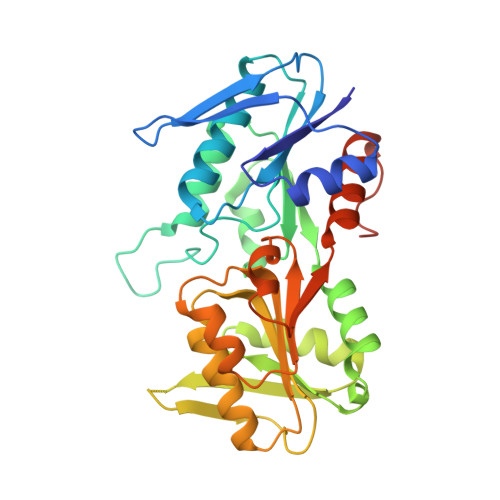Crystal and EM Structures of Human Phosphoribosyl Pyrophosphate Synthase I (PRS1) Provide Novel Insights into the Disease-Associated Mutations
Chen, P., Liu, Z., Wang, X., Peng, J., Sun, Q., Li, J., Wang, M., Niu, L., Zhang, Z., Cai, G., Teng, M., Li, X.(2015) PLoS One 10: e0120304-e0120304
- PubMed: 25781187
- DOI: https://doi.org/10.1371/journal.pone.0120304
- Primary Citation of Related Structures:
3S5J, 4LYG, 4LZN, 4LZO, 4M0P, 4M0U - PubMed Abstract:
Human PRS1, which is indispensable for the biosynthesis of nucleotides, deoxynucleotides and their derivatives, is associated directly with multiple human diseases because of single base mutation. However, a molecular understanding of the effect of these mutations is hampered by the lack of understanding of its catalytic mechanism. Here, we reconstruct the 3D EM structure of the PRS1 apo state. Together with the native stain EM structures of AMPNPP, AMPNPP and R5P, ADP and the apo states with distinct conformations, we suggest the hexamer is the enzymatically active form. Based on crystal structures, sequence analysis, mutagenesis, enzyme kinetics assays, and MD simulations, we reveal the conserved substrates binding motifs and make further analysis of all pathogenic mutants.
- Hefei National Laboratory for Physical Sciences at Microscale and School of Life Sciences, University of Science and Technology of China, Hefei, Anhui 230026, People's Republic of China; Key Laboratory of Structural Biology, Chinese Academy of Sciences, Hefei, Anhui 230026, People's Republic of China.
Organizational Affiliation:

















